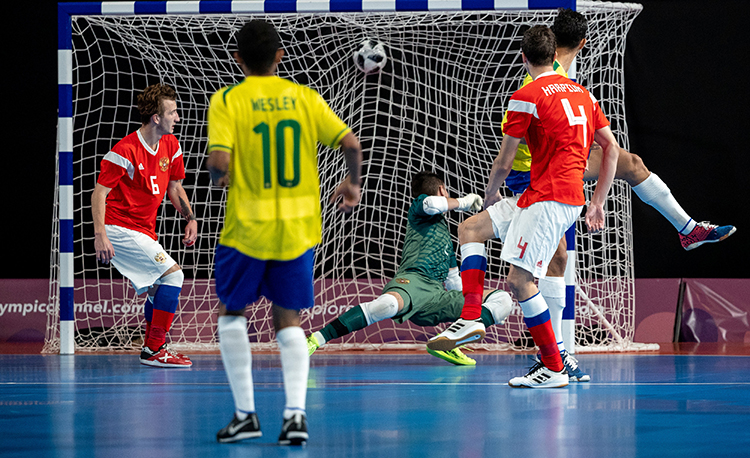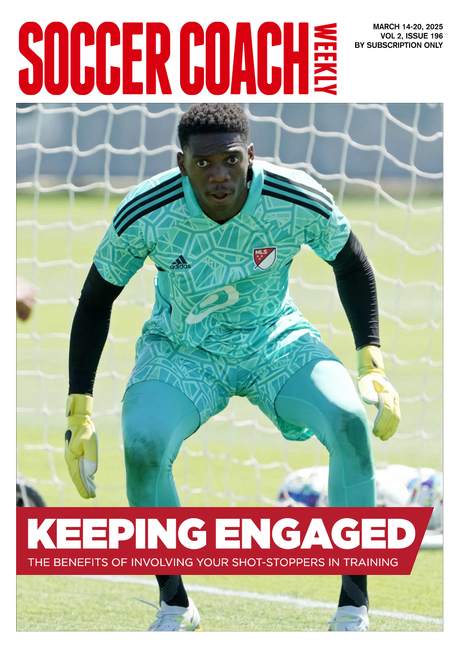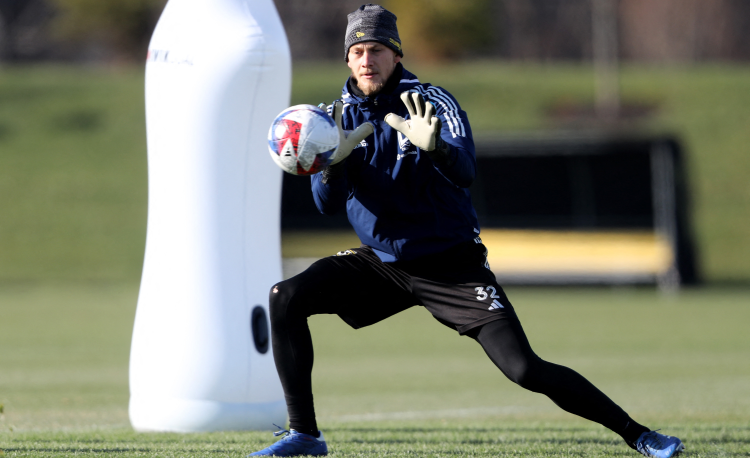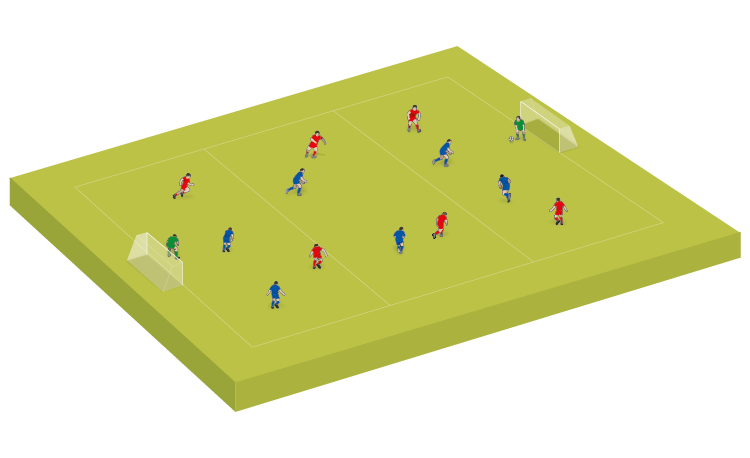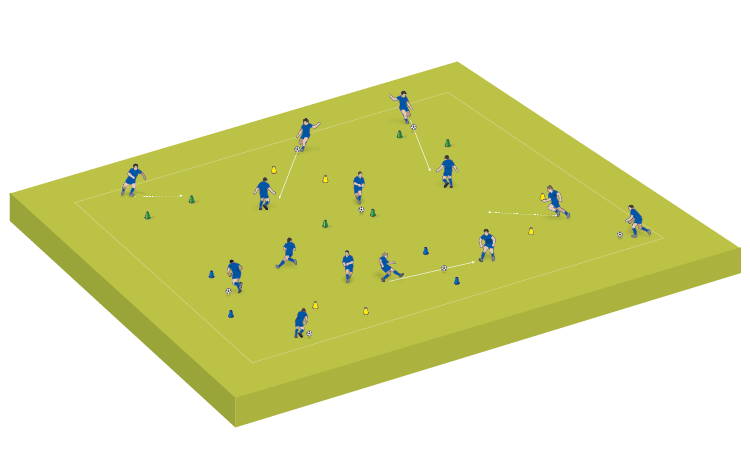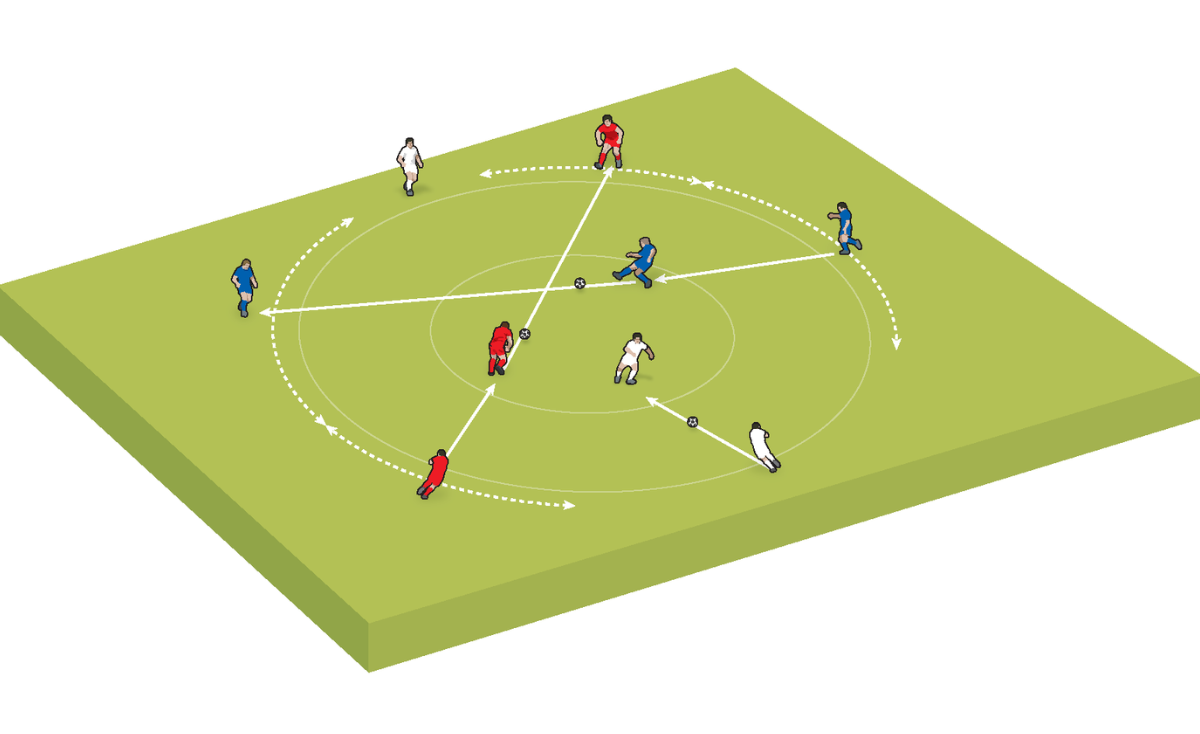Explaining futsal
Russell Fryer explains the history of futsal, how it improves technique and why it is perfect on cold and wet evenings
The origins of futsal can be traced back to the streets of Montevideo in 1930.
Inspired by Uruguay having hosted and won the first-ever men’s World Cup - and having seen the many youngsters kicking balls around in tight, urban spaces - a 23-year-old named Juan Carlos Ceriani devised a new variant of the sport.
The plan was to combine soccer rules with elements of other sports, such as basketball, water polo and handball. It was five-a-side, 20 minutes each way and could be played on basketball-sized courts, both indoors and outdoors.
Ceriani was involved with the YMCA, and the game was adopted by many of the youth social movement’s local groups as it was easy to play in compact areas.
Versions of the game spread rapidly across South America and became particularly popular in Brazil, where the first set of rules was published, the first governing body was founded and the first world championships were held.
The game grew further and reached Europe, with the second World Championships held in Madrid. Fifa created its own competition in 1989, hosted in the Netherlands. As with the other two tournaments, Brazil won.
"Teams consist of five players, but squads can have up to 14, with rolling subs..."
Spain ended the Brazilian dominance with back-to-back wins in the next two Fifa tournaments, indicating the emergence of the European nations, who have competed in every final since.
Many of the world’s greatest football stars began their careers playing futsal, including Pele, Ronaldo, Lionel Messi, Neymar, Ederson, Alisson, Ronaldinho, Andres Iniesta, Luis Figo, Philippe Coutinho and Xavi.
Rules AND Regulations
The game as we know it today is governed by two bodies, Fifa and AMF - but it is Fifa who publish the laws of the game.
They are not too dissimilar to the laws of association football, but there are some key differences:
Players: Teams consist of five players, including a goalkeeper, but squads can have up to 14 players with unlimited substitutions throughout the game on a rolling basis.
Match length: Games are played in two 20-minute halves, with the clock stopping every time the ball goes out of play or the referee blows their whistle. Coaches can request a 60-second timeout in each half.
Fouls: Accumulated in each half and reset at half-time. Once a team reaches five fouls against them, every foul thereafter results in an unopposed 10-metre penalty against them, much like free throws in basketball.

The penalty area: All players are allowed inside the area and goalkeepers are allowed out of it, if using their feet.
Restarts: If the ball goes out behind a goal, play restarts with a goalkeeper throw. The goalkeeper then cannot touch the ball again until they have crossed the halfway line or the opposition has touched it. If the ball goes out of play at the sidelines, play restarts with a kick-in, which must be taken within four seconds. This time limit also applies to free-kicks, corners and goal clearances.
Goalkeepers: Teams can play with a fly goalkeeper, which can be a traditional goalkeeper or an outfield player wearing a goalkeeper shirt - the idea being to have an extra player to maintain possession or create an attacking opportunity. The goalkeeper cannot be in possession of the ball for more than four seconds in their own half. All infringements of this rule result in an indirect free kick.
Goals: The dimensions are of the goals are 3m by 2m and are more akin to those used in handball - this makes them narrower than a football goal, which makes it harder to find corners and results in specific techniques used by futsal goalkeepers in a more upright position.
Other rules: Games are played to lines and not off walls, and the ball is allowed over head height, contrary to some people’s belief.
The Best Winter Training?
The benefits of futsal in the development of soccer players cannot be overstated, both for the sport of futsal in its own right and the development of those who play the full-sized game. Many football-playing children around the world also play futsal as a way of improving their abilities.
If you live in a country where the winters are dark, wet and cold then futsal could be the answer to cancelled training sessions and matches.
By using futsal as part of your training curriculum, you could be providing your players with a brilliant opportunity to develop speed of thought and movement, as well as lots of 1v1 opportunities, both defending and attacking.
By playing on a small court with a more dense ball that stays closer to the ground and encourages players to find solutions in tight spaces, you will be creating an environment where players will get more touches, more dribbling opportunities, more shots, more saves, more and faster passing and more tackling opportunities than they have ever had before - and they will love you for it.
Futsal is now being used more and more in professional football clubs to aid in creative growth and it is no surprise that many of the players you see on the world’s biggest stage were born from Futsal roots.
Futsal is a sport that can be played in any hall, on any outdoor court and in any park on any surface. It was no surprise to me, on a coaching trip to Rio de Janeiro, to see children playing the sport in any space available to them - and it shouldn’t be any surprise that Brazil produce a series of technically gifted soccer players.
From its origins in Uruguay almost 100 years ago, to a sport now played by more than 10 million people in more than 100 countries, Futsal should be part of your regular yearly training plan.
Related Files
Newsletter Sign Up
Coaches Testimonials

Gerald Kearney, Downtown Las Vegas Soccer Club

Paul Butler, Florida, USA

Rick Shields, Springboro, USA

Tony Green, Pierrefonds Titans, Quebec, Canada
Subscribe Today
Discover the simple way to become a more effective, more successful soccer coach
In a recent survey 89% of subscribers said Soccer Coach Weekly makes them more confident, 91% said Soccer Coach Weekly makes them a more effective coach and 93% said Soccer Coach Weekly makes them more inspired.
*includes 3 coaching manuals
Get Weekly Inspiration
All the latest techniques and approaches
Soccer Coach Weekly offers proven and easy to use soccer drills, coaching sessions, practice plans, small-sided games, warm-ups, training tips and advice.
We've been at the cutting edge of soccer coaching since we launched in 2007, creating resources for the grassroots youth coach, following best practice from around the world and insights from the professional game.
